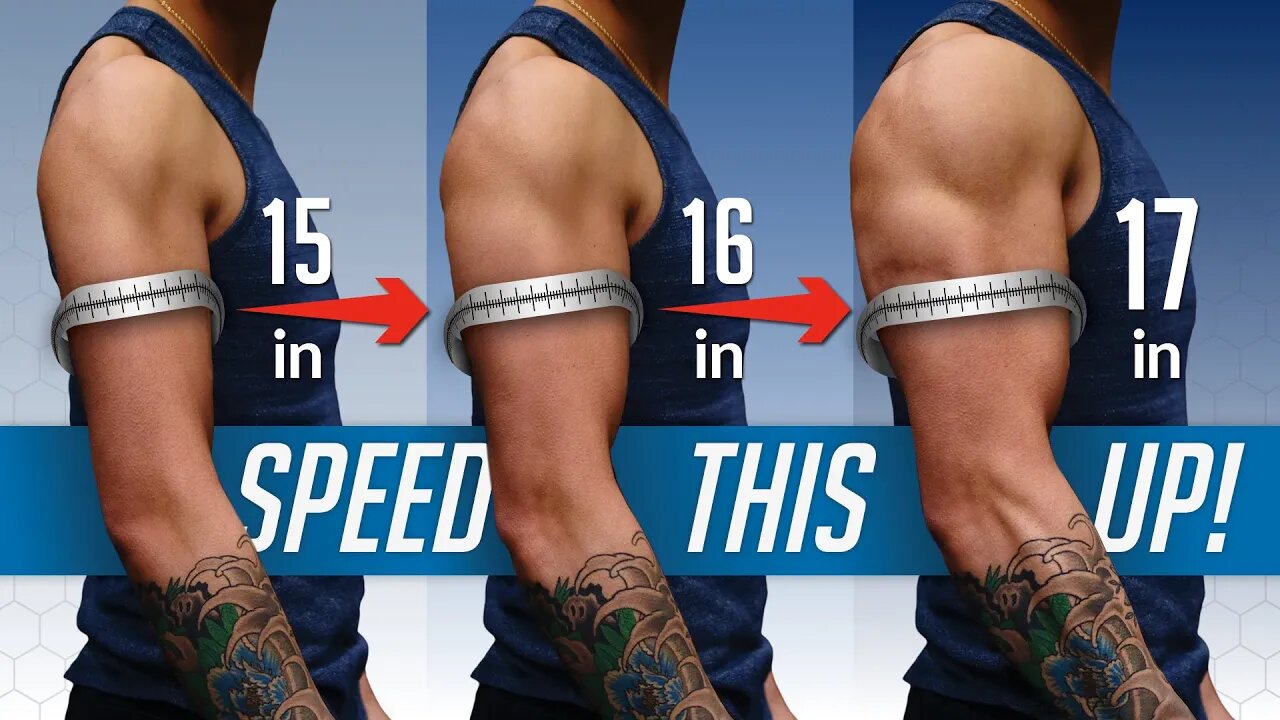Premium Only Content

Why You’re Not Making Gains (4 HIDDEN Mistakes You Don’t Realize You’re Making)
The reason why you’re not gaining the muscle you know you think you should is not because you’re “genetically cursed”. Instead, it’s more often than not due to a few key muscle building mistakes that you don’t even realize you’re making. Aside from the most obvious muscle gaining mistakes that you should definitely check off the list (e.g. getting enough protein, sleep, and calories), there are a few other lesser-known muscle building mistakes to avoid when it comes to how to gain muscle fast.
The first of the muscle building mistakes is that you just don’t have realistic expectations as to how quickly your muscles should be growing at. Research shows that on average, subjects are able to increase their muscle size by about 1 to 6% per month. Meaning that if you currently have 15 inch arms, then a realistic increase in arm circumference from 2-3 months of training would only be about half an inch, with untrained individuals likely able to gain slightly more. In terms of weight gain, this would translate to about 2lbs of muscle per month when you first start training, and will quickly dwindle down with experience. So, if you’re currently not experiencing noticeable gains week after week, just note that this doesn’t necessarily mean you’re doing anything wrong. You may just need to re-align your expectations.
As a follow up to the previous point on why you’re ‘not gaining muscle’, although progress will be slow, you need to ensure you are actually making progress. Along the way, you need to be diligently tracking key indicators that’ll help you determine if you’re truly building muscle. More specifically, track your daily morning bodyweight but most importantly track your strength and rep performance in your exercises. One additional helpful metric you may want to look at both your waist circumference and your muscle circumference measurements for your main muscle groups. To minimize error, you’ll want to have someone measure for you, be consistent with where you measure, take the average of multiple measurements, and measure every couple months or so.
One of the biggest muscle building mistakes to avoid is switching up your exercises too often. When a new exercise is initially introduced, it takes your body at least a few weeks to neurologically adapt to it and learn how to actually perform the movement most efficiently. Only after this initial learning, is when strength increases are then predominantly due to increases in muscle size. Meaning that if you switch your exercises too often, all you’re doing is essentially putting your body through this learning phase without giving it a chance to truly master the exercise and progress it to stimulate more muscle growth. So, instead, choose a decent variety of exercises for each muscle group and then keep them in your weight training routine for at least 4-8 weeks. After this point, exchange the exercise for a close variation of it only if either you’re plateauing on that exercise, it’s getting stale and demotivating for you to do, or it’s starting to cause aches and pains. Otherwise, keep it in and continue progressing it.
Maybe you haven’t been making any of the above muscle gaining mistakes. Even then, this last mistake can hinder your growth, and it’s neglecting the loaded stretch component of your training, which most often just comes down to failing to use a full range of motion particularly on key exercises where this matters the most. Because what’s interesting is that research supports the idea that applying tension to a stretched muscle seems to be an independent stimulator of muscle growth in addition to tension itself, and seems to provide a different type of growth in the muscle. So during your pressing movements like the dumbbell press or even push-ups, pay attention to the bottom position where your chest is fully stretched under load. Get as deep as you comfortably can and avoid simply bouncing out of this position.
So, as a recap, here’s a quick summary of how to build muscle fast, as outlined in this video. To build muscle, yes, you need to work hard but you also can’t overlook other important variables like tracking your progress, executing the right exercises in the right manner, properly fueling your body, and managing your recovery. And for an all-in-one system that shows you step by step how to optimize each one of these variables to transform your body as efficiently as possible just like its done for thousands of others, then take the analysis quiz to discover which science-based program would be best for you and where your body is currently at below:
https://builtwithscience.com/your-pot...
Subscribe to my channel here:
https://www.youtube.com/jeremyethier/...
-
 2:49:10
2:49:10
TimcastIRL
3 hours agoElon Musk Says X Hit By MASSIVE Cyberattack From Ukraine, Rumble Hit Too w/Ben Davidson| Timcast IRL
85.2K46 -
 2:05:10
2:05:10
Kim Iversen
6 hours agoFree Speech for Me, But Not for Thee: Trump Admin’s Protester Crackdown Sounds MAJOR Alarms
35.9K117 -
 1:29:26
1:29:26
Glenn Greenwald
6 hours agoICE Detains Permanent Resident for Protesting Israel; European Leaders Make Maniacal Rearmament Vows They Cannot Keep | SYSTEM UPDATE #421
68.2K129 -
 1:02:56
1:02:56
Donald Trump Jr.
8 hours agoUSAID Slush Fund Slashed, X Cyberattack, Plus Interview with Nate Morris | Triggered Ep.223
102K81 -
 5:48:40
5:48:40
Dr Disrespect
11 hours ago🔴LIVE - DR DISRESPECT - THE SHOTTY BOYS - WARZONE, PUBG, FORTNITE
155K38 -
 2:12:50
2:12:50
Adam Carolla
13 hours agoDouble Murder Convict to be executed by Firing Squad + Comedian Elon Gold + Comedian Carol Leifer
50.1K4 -
 46:08
46:08
Kimberly Guilfoyle
9 hours agoBad Day to be a Bad Guy: FBI Taking Down World’s Worst Criminals, Live with John Nantz | Ep.203
116K32 -
 DVR
DVR
Redacted News
7 hours agoWhat's REALLY going on in Syria? | Redacted with Natali Morris
138K69 -
 54:18
54:18
Candace Show Podcast
8 hours agoHarvey Speaks: Jessica Mann & The Five Year Affair | Ep 3
138K37 -
 56:53
56:53
Grant Stinchfield
6 hours ago $5.38 earnedFreeze Spending & Kick the Can Down the Road... Why Republicans Should do Just That!
69.2K11